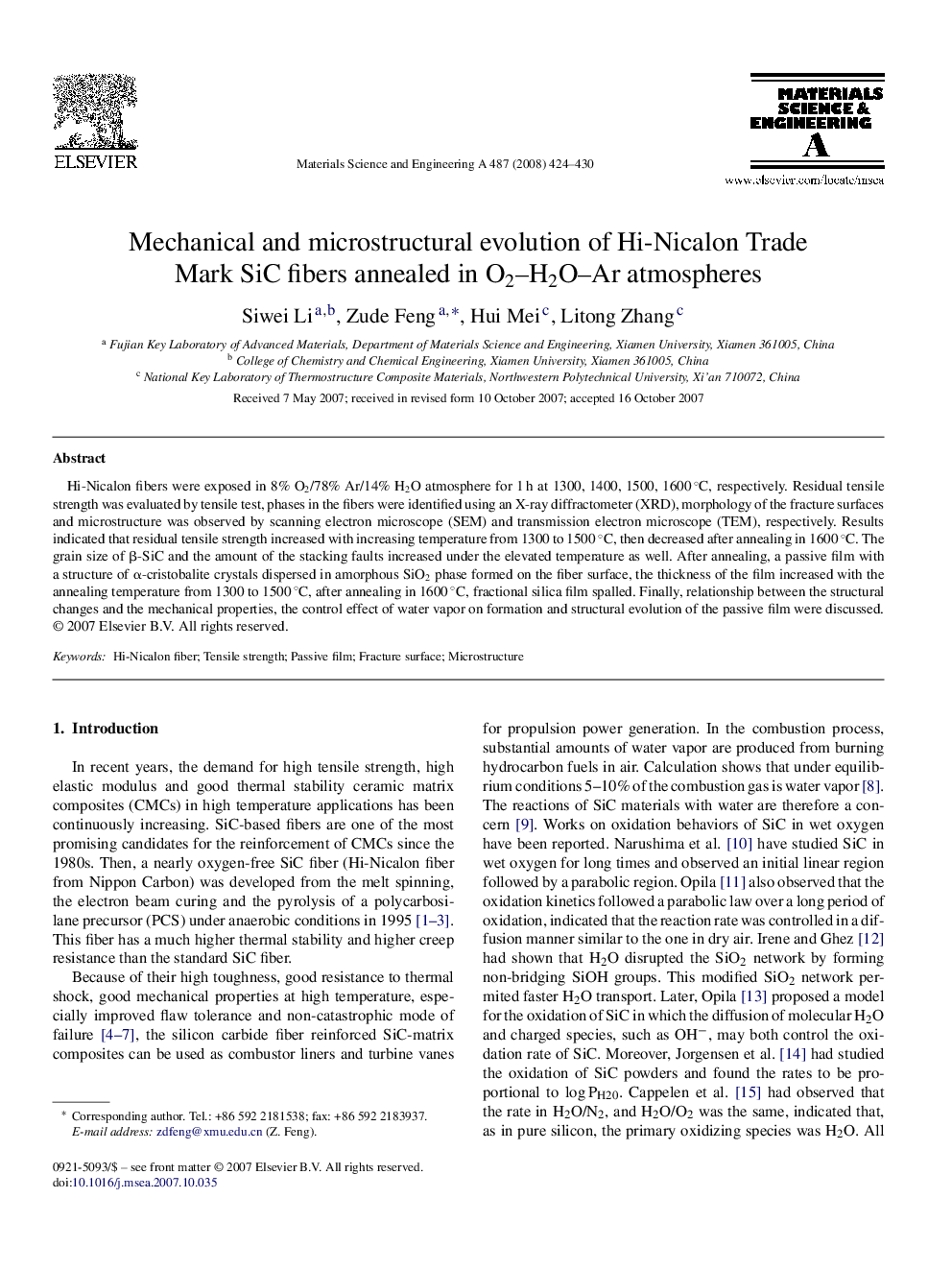| Article ID | Journal | Published Year | Pages | File Type |
|---|---|---|---|---|
| 1582590 | Materials Science and Engineering: A | 2008 | 7 Pages |
Hi-Nicalon fibers were exposed in 8% O2/78% Ar/14% H2O atmosphere for 1 h at 1300, 1400, 1500, 1600 °C, respectively. Residual tensile strength was evaluated by tensile test, phases in the fibers were identified using an X-ray diffractometer (XRD), morphology of the fracture surfaces and microstructure was observed by scanning electron microscope (SEM) and transmission electron microscope (TEM), respectively. Results indicated that residual tensile strength increased with increasing temperature from 1300 to 1500 °C, then decreased after annealing in 1600 °C. The grain size of β-SiC and the amount of the stacking faults increased under the elevated temperature as well. After annealing, a passive film with a structure of α-cristobalite crystals dispersed in amorphous SiO2 phase formed on the fiber surface, the thickness of the film increased with the annealing temperature from 1300 to 1500 °C, after annealing in 1600 °C, fractional silica film spalled. Finally, relationship between the structural changes and the mechanical properties, the control effect of water vapor on formation and structural evolution of the passive film were discussed.
